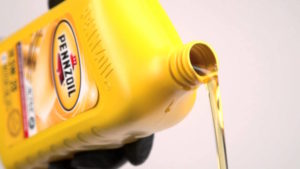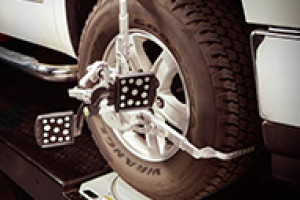 What is the difference between different grades of motor oil? To answer that question, we first need to know the meaning of viscosity as it pertains to engine oil.
What is the difference between different grades of motor oil? To answer that question, we first need to know the meaning of viscosity as it pertains to engine oil.
What is Viscosity?
Simply put, viscosity refers to the ability of a liquid to flow. In a laboratory, viscosity is usually assessed by measuring the flow of a liquid through a tube with an opening of a fixed size at a standard temperature. Or, by measuring the resistance that liquid exerts on a rotating shaft in a container.
Higher viscosity means greater resistance to flow. Water, for example, has a very low viscosity and it flows quite easily. Molasses, which is thick and gooey, has a very high viscosity.
Engine Oil Viscosity Numbers and What They Mean
Most engine oils on the shelves today are referred to as “multigrades”. This simply means that the oil falls into 2 viscosity grades, such as 10w-40, 5w-30, etc.
In a 10w-40 grade, the “10w” (W = winter), simply means that the oil must have a certain maximum viscosity/flow at low temperature (10 degrees celsius). The “w” stands for winter. It does not stand for weight. The lower the “W” number the better the oil’s cold temperature/cold start performance.
The “40” in a 10w-40 means that the oil must fall within certain viscosity limits at 100 degrees celsius (212 degrees Fahrenheit). This is a fixed limit and all oils that end in 40 must achieve these limits. A 10w-30 grade oil means the oil must fall within certain (different than 40) viscosity limits at 100 degrees celsius (212 degrees Fahrenheit)
Once again the lower the number, the thinner the oil: a 30 oil is thinner than a 40 oil at 100°C etc.
Here’s a recap
The first number in “5W-30” oil means the oil in your engine meets a certain cold temperature/ cold start performance. A 5W oil should perform better in cold starting conditions than a 10W oil. A 10W oil would perform better in cold starting situations than would a 20W oil.
The “W” simply stands for “winter”. It does not stand for weight.
Theodore, the “30” in “5w-30” means your oil must have a certain viscosity at 30 degrees celsius and the oil must fall within certain viscosity limits at 100 degrees celsius (210 degrees Fahrenheit). A 40 grade oil must perform to certain (but different than 30) standards also within certain viscosity limits at 100 degrees celsius (210 degrees Fahrenheit).
Use The Oil You Owner’s Manual Recommends
Your vehicle’s engine was built to use a certain type of oil. The vast majority of newer vehicles use a premium conventional oil. Carmakers usually specify a 5W-20 or 5W-30 oil, particularly for lower temperatures, with a 10W-30 oil as optional, particularly for higher ambient temperatures. These three ratings cover just about every light-duty vehicle on the road today.
However, high tech engines such as ones found in Chevrolet Corvettes or Mercedes Benz’ will use full synthetic oils. These oils pass stringent special tests (indicated by their labeling). It means they have superior, longer-lasting performance in all the critical areas, from viscosity index to protection against deposits. They flow better at low temperatures and maintain peak lubricity at high temperatures.
You should always use the oil designated for your vehicle in your owners manual. As your vehicle gets older and accumulates high milage, ask your mechanic or oil change specialist for a recommendation as to what type of engine oil you should be using.
Postle Tire Barn is a family owned and operated business, serving the Tuscaloosa and West Alabama area for more than 35 years. We are located in Tuscaloosa on Jug Factory Road behind McDonalds.




Recent Comments